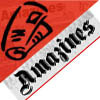|
What are lift tables? As the name suggests, lift tables are tables or platforms, which can be lowered or raised to any desired height within their range of vertical motion. If you have plans of using a lift table, you should first get informed about its basic parts. This article will introduce you to the important body parts of a lift table. Read through the discussion below not only to get acquainted with different parts of a lift table, but also to understand its working procedure. The lift table base frame: The primary function of lift table’s base frame is providing support to its remaining parts. A base frame is the most rigid and strongest part of a lift table. Base frames of the majority of the lift tables are designed for being placed on the floor. However, you will also come across base frames that are designed for being fitted into pits. There are also lift table models that are equipped with forklift chassis, wheels or casters. The scissors: Every lift table comes equipped with a pair of scissor legs. The scissors are responsible for giving the lift table its range of vertical motion. In addition to that, they also provide support to the top or platform of the lift table. The platform or top: The size of a lift table platform may vary from one lift table model to the other. However, for perfect table lifting, lift table’s platform size must be compatible with its scissor and base frame. The top or platform of a lift table can be bigger than its base frame/scissors, but should never be smaller. Lift tables can boast tilt tops, tops carrying clamps or other special fittings, turntables or conveyor tops. The lift table power pack: The majority of the current generation lift tables possess electro hydraulic power pack units. The power pack of a lift table typically includes a hydraulic cylinder, hydraulic tank, hydraulic pump, electric motor, electrical control unit, valving and piping. When you activate the UP button, the pump will start pumping liquid from the hydraulic tank to fill the hydraulic cylinder. This in turn will move the piston shaft (linked mechanically to the lift table scissor legs mechanically) and make the scissors move vertically to lift the platform. Between the hydraulic cylinder and pump lies the check valve, which ensures that the liquid does not flow backward. As a result, the platform remains in the same height even when you deactivate the UP button. For bringing back the lift table to its original height, you to have to activate its DOWN button. As soon as you activate the DOWN button of the lift table, the down valve will open and the liquid will flow back. When the lift lowers, the motor stops running. The weight of the lift table top combines with gravity to form a natural pressure within the hydraulic cylinder. This pressure allows the liquid to flow backward. The lift table control unit: Most lift tables available in the market either possess foot controls and push button control units. Use the provided links to know about Lift Tables and furthermore about Table Lifting.
Related Articles -
lift tables, table lifting, hercules,
|



















